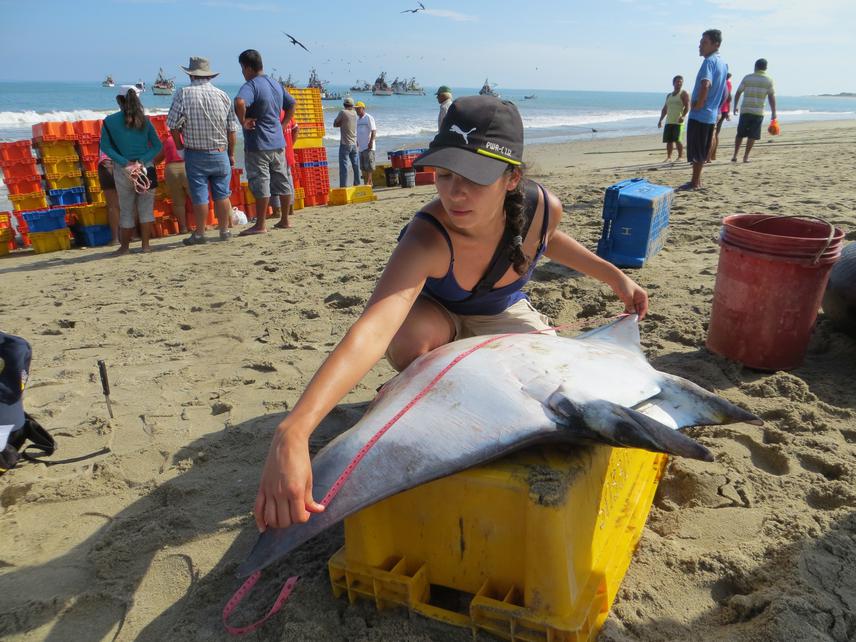Eliana Micaela Alfaro Córdova
Contribute to mobulid conservation in northern Peru, through providing scientific information about the fishing activity and the species caught, as well as working on fishermen awareness.

Manta and devil rays (Mobulidae) compose the largest group of rays displaying life traits (matrotrophic reproduction, large birth size, slow growth, delayed age of reproduction and low fecundity) that makes them highly vulnerable to overexploitation (IUCN).
Although Peru has been classified as one of the countries with highest elasmobranch fisheries (Lack and Sant, 2009; Velez-Zuazo, 2012), local fishing allocation plans had not been elaborated yet due to poor basic information on elasmobranch ecology and fishery. In this sense, the recently approved PAN-Tiburon has as first term objectives to develop an informative system and promote scientific research about elasmobranch ecology and fisheries. Further, the dynamics of the ray fishery in Peru is largely unknown. Globally, around 70% of the most threatened elasmobranch families are rays. This label in part corresponds to a high uncertainty due to data deficiency (Dulvy et.al, 2013). Considering the poor knowledge about mobulid fishery in northern Peru and the necessity to apply conservation regulations for elasmobranchs, this project seeks to generate local awareness to mobulid conservation, as well as accurate information about its fishery.
Information about mobulid fishery will be generated through field observations and genetic analyses (considering the limitations of morphological identification in field). On-board observations will provide data about of fishing activity and land observations will give information about mobulids landed per vessel-gear. Tissue samples of the main mobulid specimens caught will be collected by on-board observers, processed and analysed for DNA barcoding. Morphological identification of mobulid rays will be tested with barcode sequencing.
By combining On-board and land data, as well as genetic identification of species, we will be able to estimate the diversity and amount of mobulid species that are fished in these study zones; which is extremely necessary for further discussions on conservation regulations.
During the project continuously workshops with fishermen will be conducted concerning the role and importance of mobulids in the ecosystem to generate not only awareness about its conservation but also a genuine interest of the fishermen community towards what it is they are fishing. Guidelines for better morphological identification of some mobulid species will be also shared. Fishermen will be able to identify caught species, providing valuable information as base line data for further studies and management plans.